Importance of Content Marketing for SaaS Companies

Do you know what’s common among all successful SaaS companies like HubSpot, Slack, Trello, or even Salesforce?
They have a killer content marketing strategy that has helped them gain millions of visitors on their websites every month, positioning them as the go-to brands in their respective industries.
But what is content marketing for SaaS companies? The Content Marketing Institute (CMI) defines content marketing as “a strategic marketing approach focused on creating and distributing valuable, relevant, and consistent content to attract and retain a clearly defined audience — and, ultimately, to drive profitable customer action.“
Content marketing is pivotal in the SaaS industry by facilitating meaningful connections with target audiences and driving user engagement throughout the customer journey.
Unlike traditional product-centric approaches, SaaS content marketing focuses on delivering value through informative, educational, and relevant content. This approach not only establishes a brand as an authority in its domain but also helps build trust and loyalty among users.
In fact, 74% of B2B marketers say that providing value is the key element contributing to the success of content marketing initiatives. Meanwhile, among the most successful B2B tech enterprises, 57% outsource their SaaS content marketing activities.
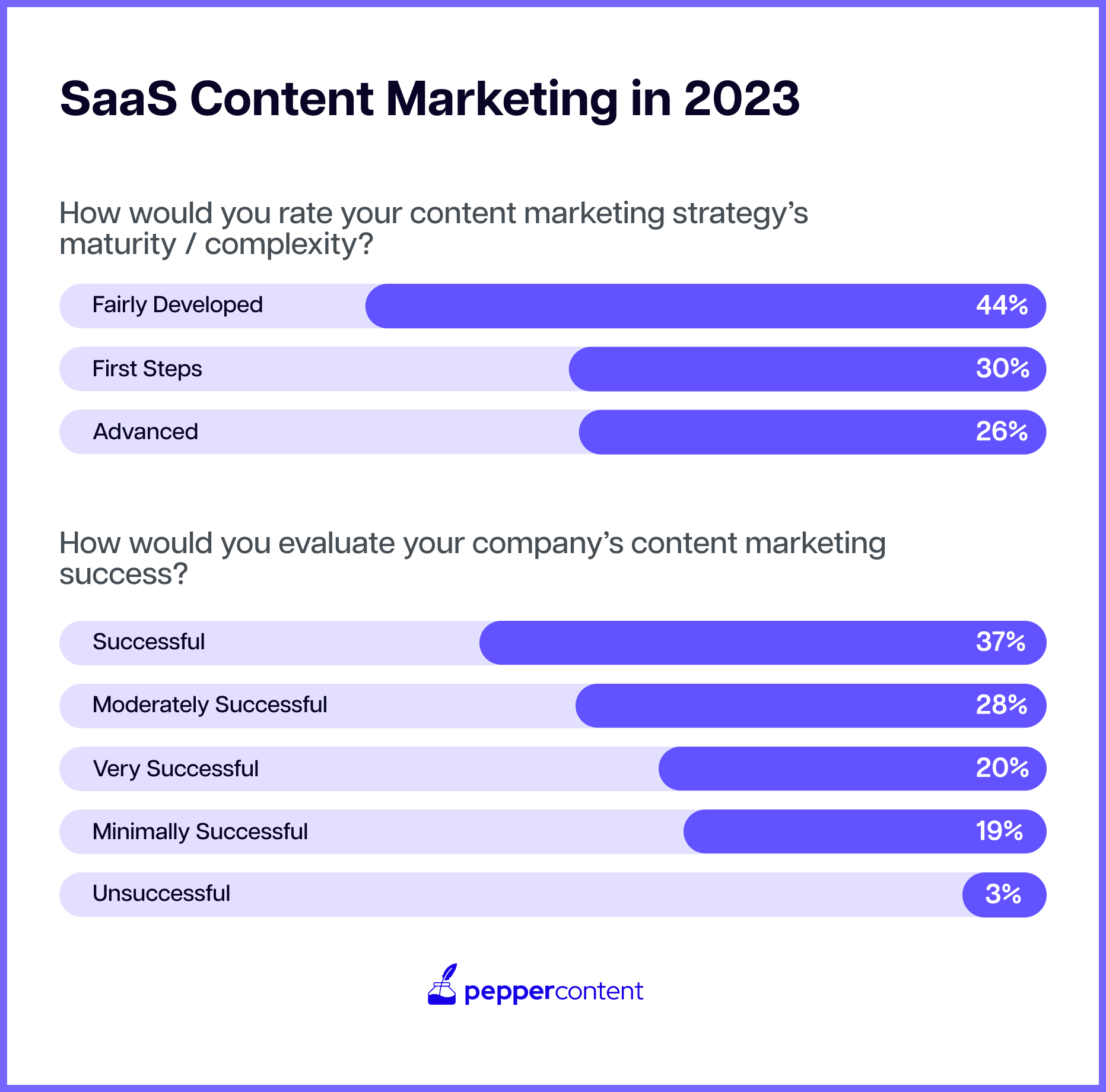
Looking at the success of SaaS companies, more and more brands are looking to invest in SaaS content marketing. For example, 75% of SaaS companies expect to increase their budgets in the coming months.
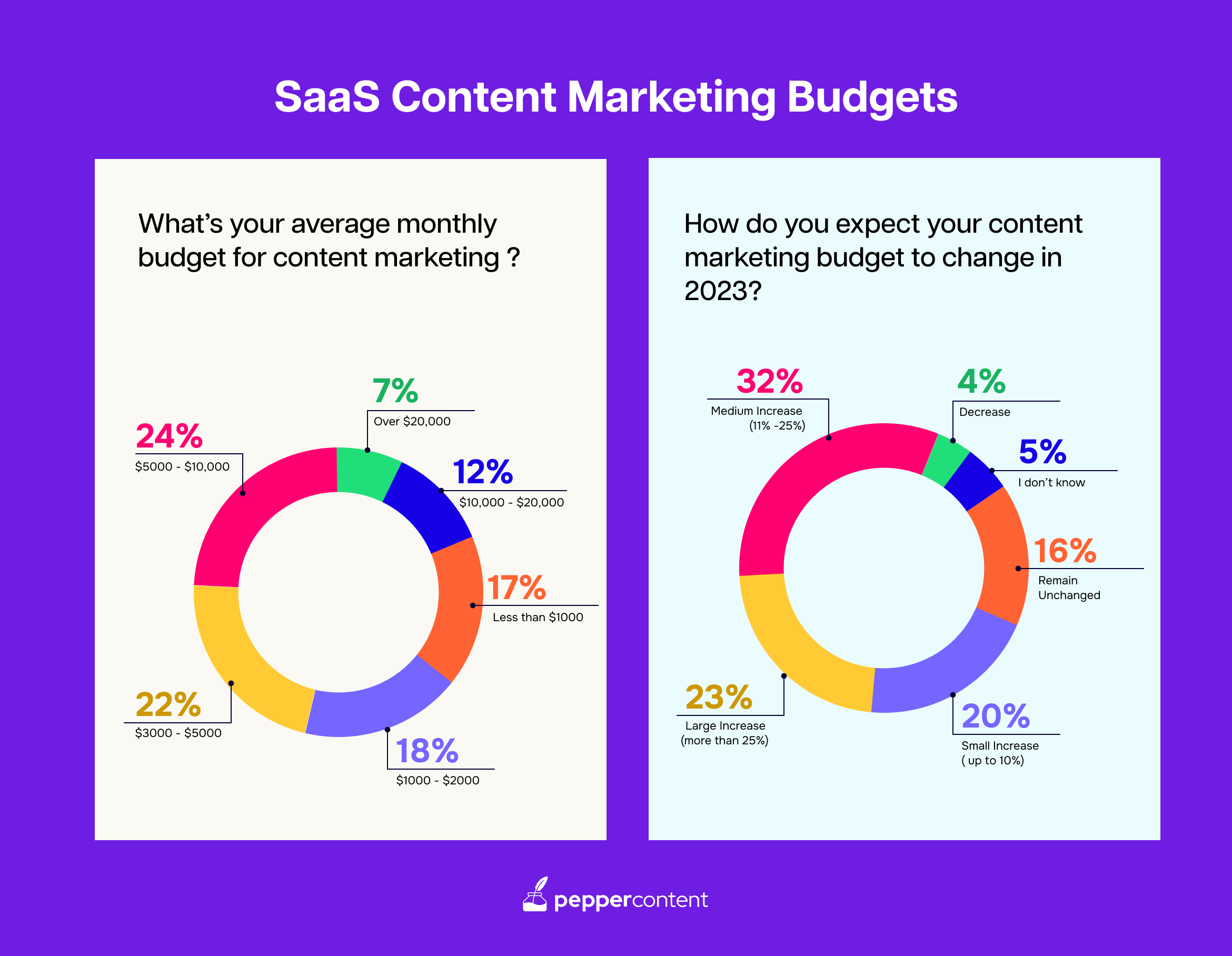
As the SaaS industry continues to evolve, so do the trends in content marketing. Some key trends shaping SaaS content strategies include:
-
Interactive Content: SaaS companies increasingly incorporate interactive content such as quizzes, assessments, and guides to enhance user engagement and provide personalized experiences.
-
Video Content: Video has become a dominant medium for conveying information. SaaS companies leverage video content for product demonstrations, tutorials, and customer testimonials to make complex concepts more digestible.
-
Personalization: Tailoring content to the specific needs and preferences of individual users is gaining prominence. SaaS companies use data-driven insights to create personalized content that resonates with their target audience.
-
User-Generated Content: Encouraging users to share their experiences, reviews, and success stories can amplify a SaaS company’s credibility. User-generated content adds authenticity and fosters a sense of community.
-
SEO and Thought Leadership: SaaS companies prioritize search engine optimization (SEO) to enhance visibility and thought leadership. Creating high-quality, SEO-optimized content helps SaaS brands position themselves as industry leaders.
Now that we have an understanding of content marketing’s importance for SaaS companies and how the marketplace needs are evolving, let’s take a look at some of these strategies in detail.
Understanding the Product and Audience
SaaS products are relatively complex compared to other products, requiring an in-depth understanding of the value proposition and messaging to be successful. Creating content without a robust business and product strategy is a recipe for disaster and will only deplete your brand’s resources with little to no ROI. Develop a multifaceted strategy if you want to create effective product-focused content and seamlessly integrate tools into thought leadership.
For example, highlight specific features of your SaaS product through dedicated content pieces. Whether it’s through blog posts, tutorials, or video demonstrations, showcasing how features solve problems adds value and helps users make informed decisions.
You can also develop content illustrating real-world use cases for a practical understanding of your product’s applications, resonating with potential users. Create interactive demos or virtual walkthroughs for a hands-on experience, emphasizing your product’s capabilities. Beyond problem-solving, incorporate educational content providing industry insights, best practices, and emerging trends to position your brand as a thought leader.
By strategically integrating product-focused content into broader thought leadership narratives, SaaS companies can build credibility, engage their audience, and position themselves as leaders within their industry.
Developing a Strong Keyword and SEO Strategy
Now, increasing the ranking of your content is based on identifying the keywords actively sought by your target audience. Companies often diverge in their approach, with some initially selecting topics and subsequently searching for keywords, while others follow the other way around. Regardless of your chosen route, incorporating keyword research tools such as Ahrefs or Semrush is essential. For added support, use free tools like Google’s Keyword Planner.
To illustrate the process, let’s consider the example of a project management tool. Begin by entering the term “project management” into your chosen tool.
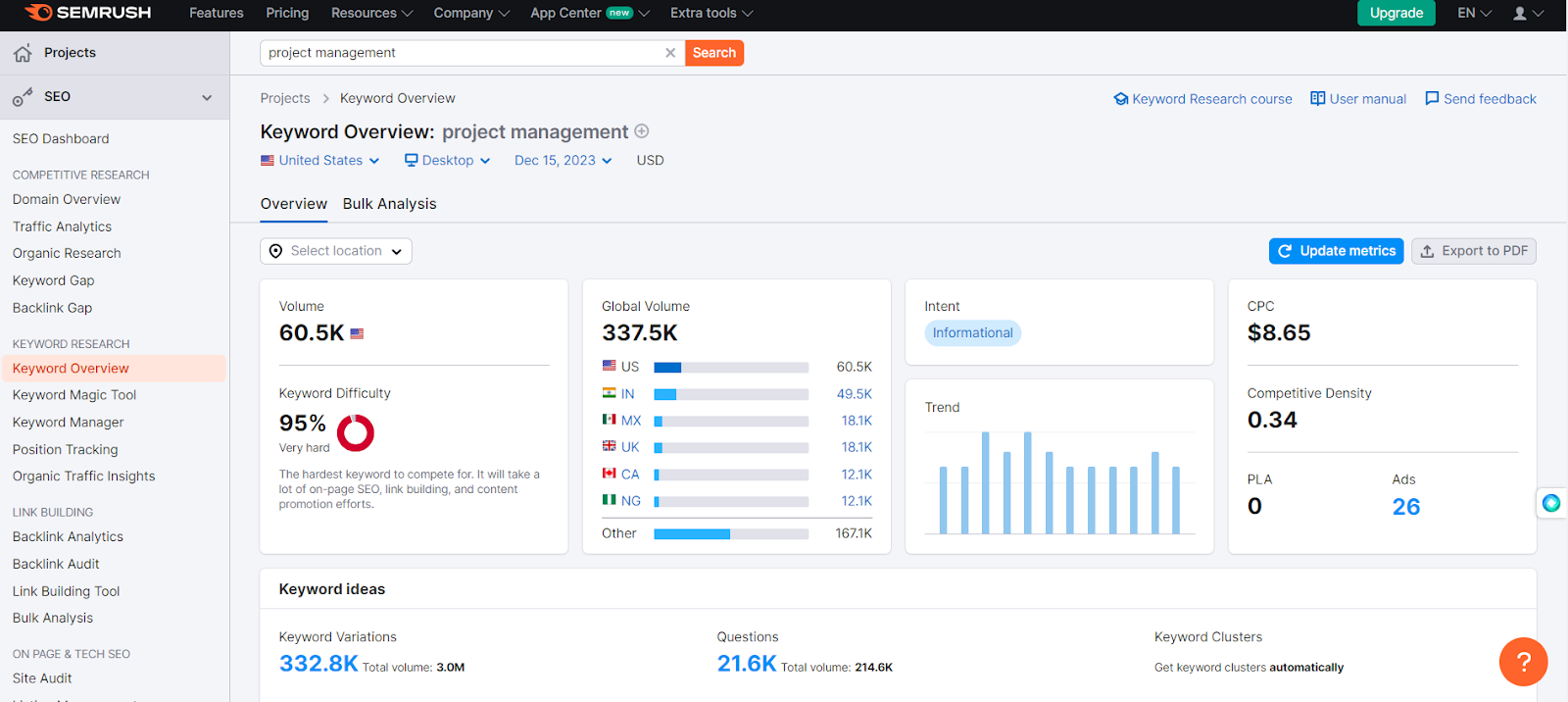
You can add modifiers and filters tailored to different buyer stages, such as guides, tutorials, how-tos, whys, whats, examples, and tools. Adjust the “Keyword Difficulty” settings to find easier topics or keywords aligning with your content strategy.
Follow these best practices for effective keyword research:
-
Focus on Less Difficult Keywords: If you’re a beginner, create content around easier keywords to increase your chances of ranking successfully.
-
Optimize Blog Titles and URLs: Ensure your chosen keyword is included in the blog title and URL. Keep URLs concise for clarity, helping Google understand your content.
-
Use Secondary Long-Tail Keywords: Strengthen your blog posts by including secondary long-tail keywords. Building topic clusters around these keywords enhances your content’s overall depth and relevance.
-
Align Topic with Search Intent: When using a keyword for a particular topic, ensure that your content aligns with the search intent. For instance, if users search for “project management best practices,” provide information on efficient project management rather than exclusively focusing on your product to prevent high bounce rates.
Remember that keywords alone are not enough if your content fails to deliver on them. Focus on creating SEO-optimized content that aligns with user intent, providing value and relevance for a more impactful online presence.
Content Diversification and Engagement
Let’s take a look at the different content formats that SaaS companies typically use to create high-quality content and engage their target audience:
-
Case Studies: These real-world success stories offer a detailed narrative of how a product or service solved a specific problem for a customer. They provide valuable insights, build credibility, and serve as compelling proof of your offerings’ efficacy.
-
E-books: E-books provide an opportunity to delve deeper into complex topics or industry trends. They offer a comprehensive and downloadable resource that audiences can consume at their own pace, making them ideal for in-depth exploration.
-
Whitepapers: These are authoritative documents that dive into a particular issue, offering insights, analysis, and potential solutions. They establish your brand as a thought leader within the industry and can be valuable assets for B2B marketing.
-
Videos: The visual appeal of videos makes them a powerful tool for conveying information. Whether through product demonstrations, explainer videos, or customer testimonials, videos engage audiences on a personal level and can be shared across various platforms.
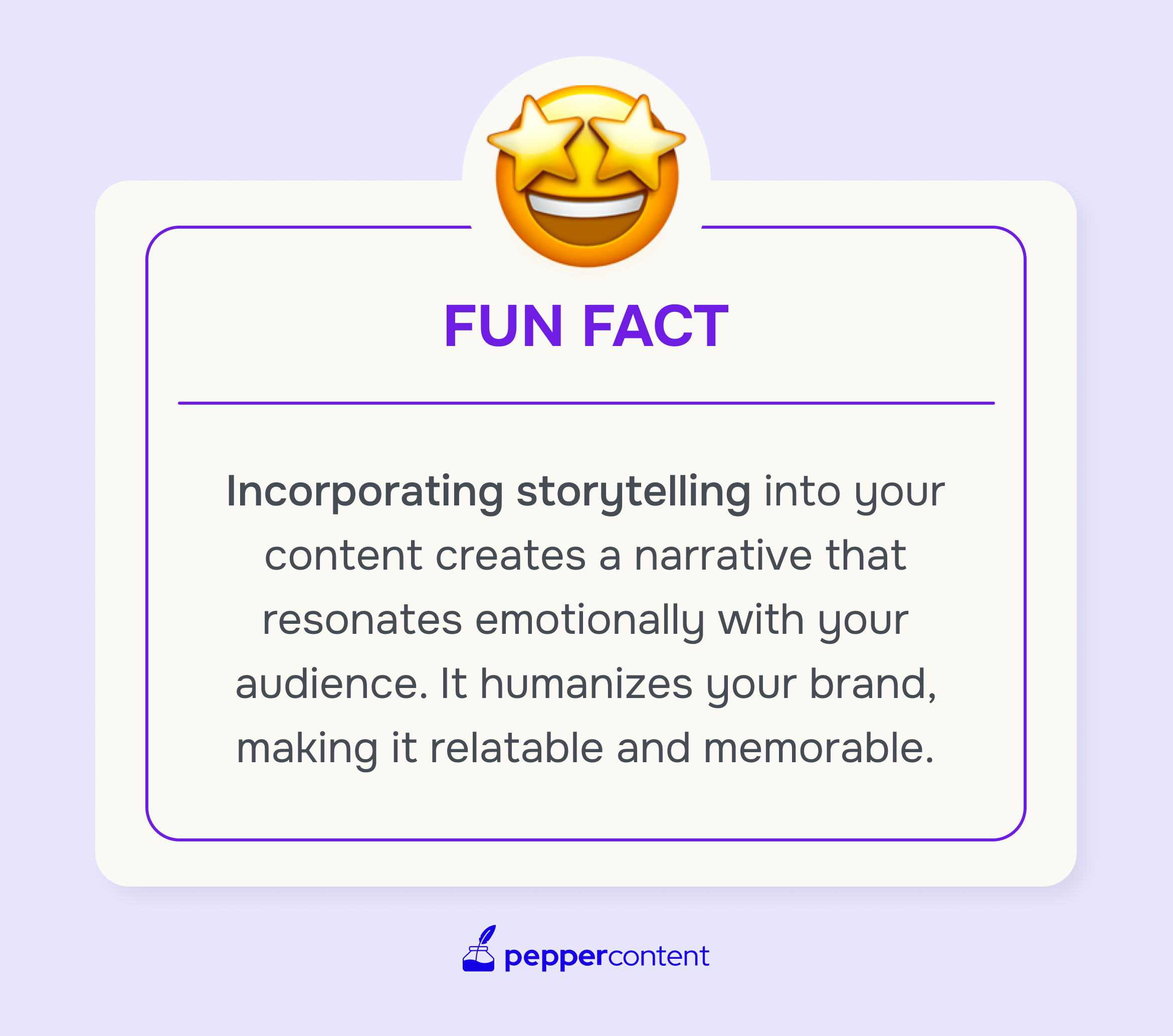
Crafting an Effective Content Marketing Funnel
A well-designed content marketing funnel is crucial for guiding potential customers through the buyer’s journey, from awareness to conversion. You can use shareable content and SEO for the awareness stage, provide in-depth information in the interest stage, address concerns in the consideration stage, and offer incentives for conversion in the decision stage. Post-purchase content ensures customer retention with onboarding guides and loyalty programs.
When it comes to designing lead-nurturing content workflows, it requires a deep understanding of buyer personas and mapping content to the buyer’s journey. Marketing automation tools can schedule and deliver content strategically, while personalization based on user data enhances engagement.
You also need to prioritize quality over quantity in SaaS content creation by strategically planning topics, investing in visual and interactive formats, showcasing thought leadership, and maintaining a consistent brand voice.
For example, use AI writing tools like ContentShake for a more efficient and accelerated content creation process. Pepper CMP is another robust AI-powered content marketing tool that allows marketers to scale content marketing efforts by marrying enterprise workflows, expert talent, and AI.
You can’t deliver content before understanding and segmenting your target audience. You need to collect and analyze data, create detailed buyer personas, and leverage behavioral segmentation.
While creating your buyer persona, here are some of the things you need to consider:
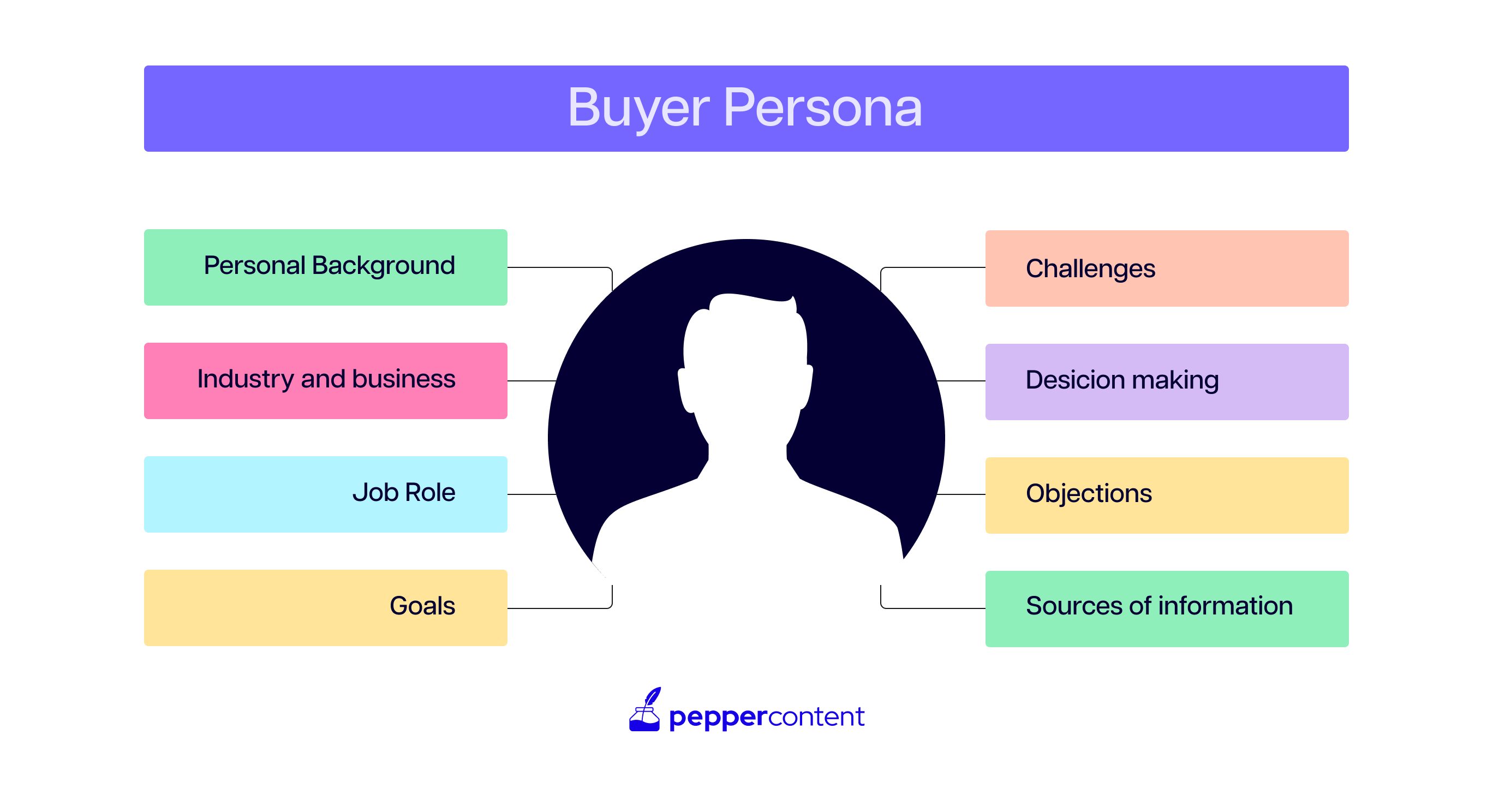
Social listening and feedback loops provide additional insights, helping refine content to better meet audience needs. Collectively, these strategies contribute to a more tailored and effective content marketing approach.
Effective Content Scheduling and Formatting
While creating high-quality content is essential to your strategy, you shouldn’t stop publishing after a blog post goes live. Consistency is key to successful content marketing for SaaS.
To increase your search engine rankings and maximize your reach, you must ensure that your content is distributed across all relevant channels and published at the right time. To achieve this, you need to create a content calendar to help you strategize on the keywords you want to rank for and how you should schedule content focusing on these keywords.

Tips for Effective Content Formatting
Effective content formatting goes beyond just words; it enhances readability and engagement. You should consider the following tips when formatting your content:
-
Readability: Use concise sentences and paragraphs to ensure your content is easy to read. Break down complex ideas into digestible sections, and use headings and subheadings to structure your content logically.
-
Visual Elements: Integrate visually appealing elements such as images, infographics, and videos to break up text and make content more engaging. Visuals not only enhance understanding but also contribute to a shareable user experience.
-
Scannability: Understand that many users scan content before committing to a full read. Use bulleted lists, numbered points, and bold text to highlight key information. Employ a clear hierarchy in your content, allowing readers to identify and absorb the most important details quickly.
By combining a consistent content publishing schedule with effective formatting techniques, you can maximize the impact of your content marketing efforts.
Content Promotion and Distribution
Getting your content to the target audience is crucial. You’ll want to share your content through different channels, including leveraging social media, sending out emails, running ads, and getting your content in industry publications.
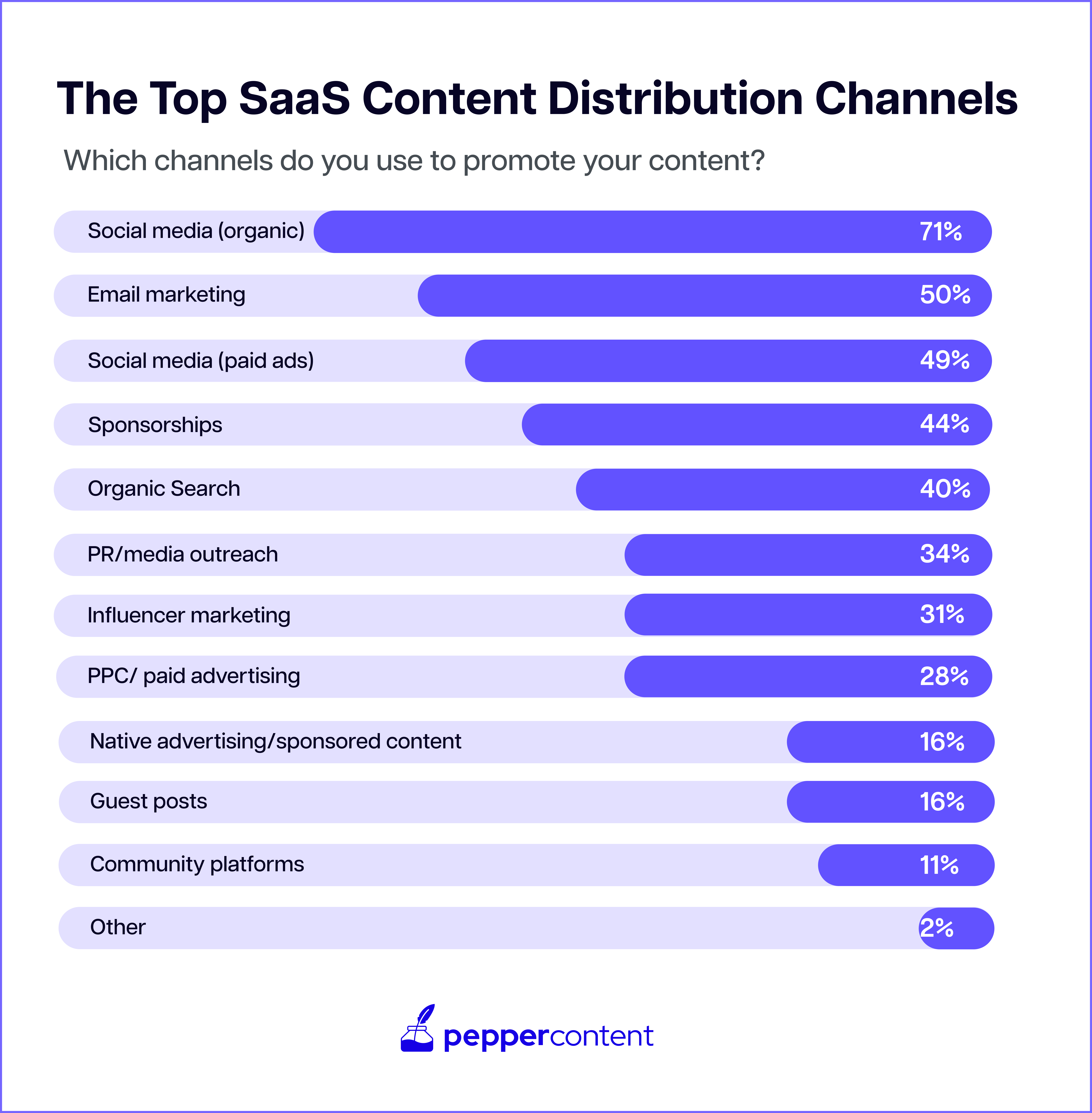
While shared channels allow free posting, the content no longer remains exclusively yours once shared.
You can also leverage paid channels, involving influencers who promote your product in exchange for a fee, offering a wider reach and exposure to a targeted audience.
By combining owned, shared, and paid distribution channels, businesses can optimize their content reach and engagement, ensuring that the right audience discovers and engages with their valuable content.
Once your content distribution plan is in action, it’s crucial to see if your SaaS content marketing strategy is paying off. Here, you must regularly analyze performance metrics to refine your strategy based on what works best. As you go along, you can see which content works best and where you might need to make some changes. You can do this check every few weeks or a month to stay on top of your progress.
Wrapping Up
Content marketing for SaaS companies requires a keen focus on understanding your audience and catering to their needs. It is a long-term strategy that can have a profound impact on the growth of your business.
By following these steps and focusing on the end goal, your business will be on the path to SaaS content marketing success. Tools like Pepper CMP will make things easier for you by walking you through the whole process in a straightforward way.
Looking for high-quality SaaS writing services? Look no further because Pepper Content is here to take care of all your content needs. Contact us today!
Latest Blogs
Learn how to rank on AI search engines like ChatGPT, Perplexity, and Gemini by optimizing your content for authority, structure, and relevance. Stay ahead in AI-driven search with this strategic guide.
Explore the best healthcare SEO services for your medical practice. Improve online visibility and effectively reach more patients in need of your services.
Discover top social media agencies specializing in banking solutions, enhancing financial services and driving engagement.
Get your hands on the latest news!
Similar Posts

Content Strategy
5 mins read
Choosing The Best Healthcare Marketing Agency For Effective Content Solutions
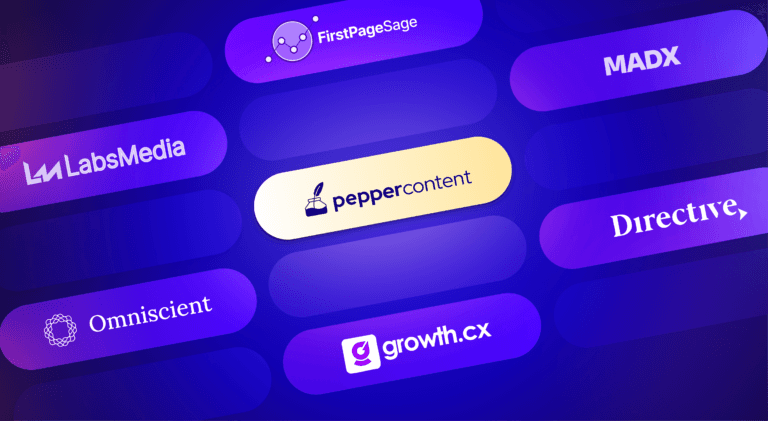
Content Marketing
4 mins read
Top 10 Agencies B2B SaaS Content Marketing for B2B Success

B2C Marketing
5 mins read